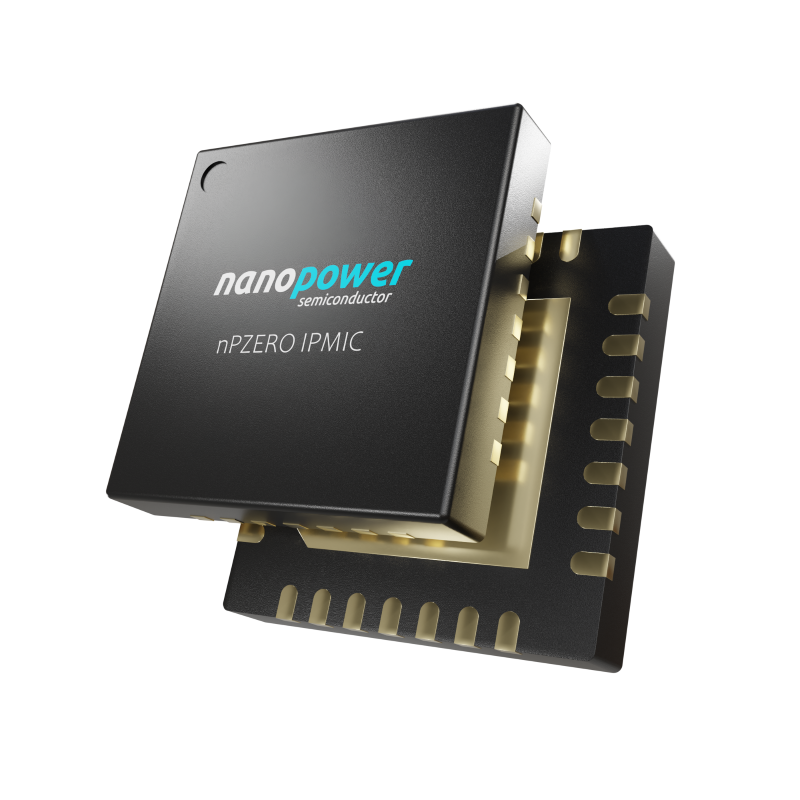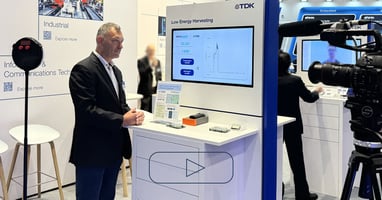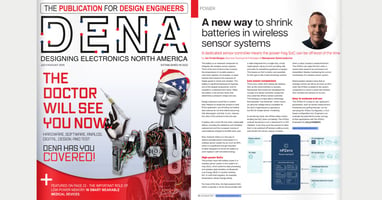Video interview with Carlos Schlabitz from the TDK presenting our latest collaboration.
How to reduce the power consumption of a wireless IoT device
As the Internet of Things (IoT) continues to expand, the demand for wireless IoT devices is skyrocketing. However, one of the significant challenges faced by IoT device manufacturers and users is power consumption.
This blog post will explore our effective solution to this problem by utilizing Nanopower Semiconductor's IPMIC (Intelligent Power Management Integrated Circuit). By leveraging the IPMIC, you can optimize the power usage of the system, particularly by intelligently controlling and taking over responsibilities from the wireless chip, resulting in substantial power savings.
Understanding the IPMIC
The nPZero SENTINEL IPMIC, Intelligent Power Management Integrated Circuit, developed by Nanopower Semiconductor, is set to revolutionize the power consumption of battery and energy-harvesting powered devices, offering install-and-forget capabilities.
It incorporates the nPZero architecture, which redefines low power by reducing power consumption by up to 90%. This groundbreaking design represents a new way of thinking when it comes to battery-constrained systems.


Power Management Features
-
Powering down the wireless chip
The IPMIC's unique low power consumption through a full-subthreshold design allows it to power down the wireless chip when it is not actively transmitting data. This significantly reduces the power consumption and extends the battery life. -
Standalone operation and intelligent power management
The IPMIC can operate the entire system without an active host, such as an MCU, processor, or wireless SoC. It takes over the controller role and manages peripherals like sensors, optimizing power consumption. It can also wake up the host based on user-defined rules, allowing it to initiate wireless communication when necessary. This approach enables shutting down the power-hungry host while keeping functions and responsiveness intact. -
Peripheral power optimization
The IPMIC offers individual power cycling and voltage regulation of peripherals, ensuring the lowest possible power consumption. By managing power to peripherals efficiently, the overall power usage of the system is further optimized.
Benefits of IPMIC
-
Extended battery life
By leveraging the power management capabilities of IPMIC, you can significantly extend the battery life of your wireless IoT device. Powering down the wireless chip during idle periods and optimizing the power consumption of peripherals results in efficient use of available energy. -
Enhanced resource utilization
IPMIC's standalone operation and intelligent power management ensure that only essential data is transmitted. Unnecessary network traffic is reduced, leading to improved resource utilization and scalability of the overall system. This helps in reducing operational costs and maximizing the efficiency of your wireless IoT device. -
Flexibility and customization
The IPMIC can be configured for specific applications using the provided API for programming via the host. This allows developers to tailor the system to the unique requirements of their IoT application, ensuring optimal power savings without compromising functionality.
Conclusion
Efficient power management is crucial for the widespread adoption and success of wireless IoT devices. By integrating Nanopower Semiconductor's IPMIC into your IoT device, you can effectively reduce power consumption while maintaining essential functionality. The IPMIC's ability to power down the wireless chip and manage the system on its behalf, intelligent power management features, and peripheral power optimization result in significant energy savings.
Embrace this advanced power management solution to maximize battery life, optimize resource utilization, and unlock the full potential of your wireless IoT device.



